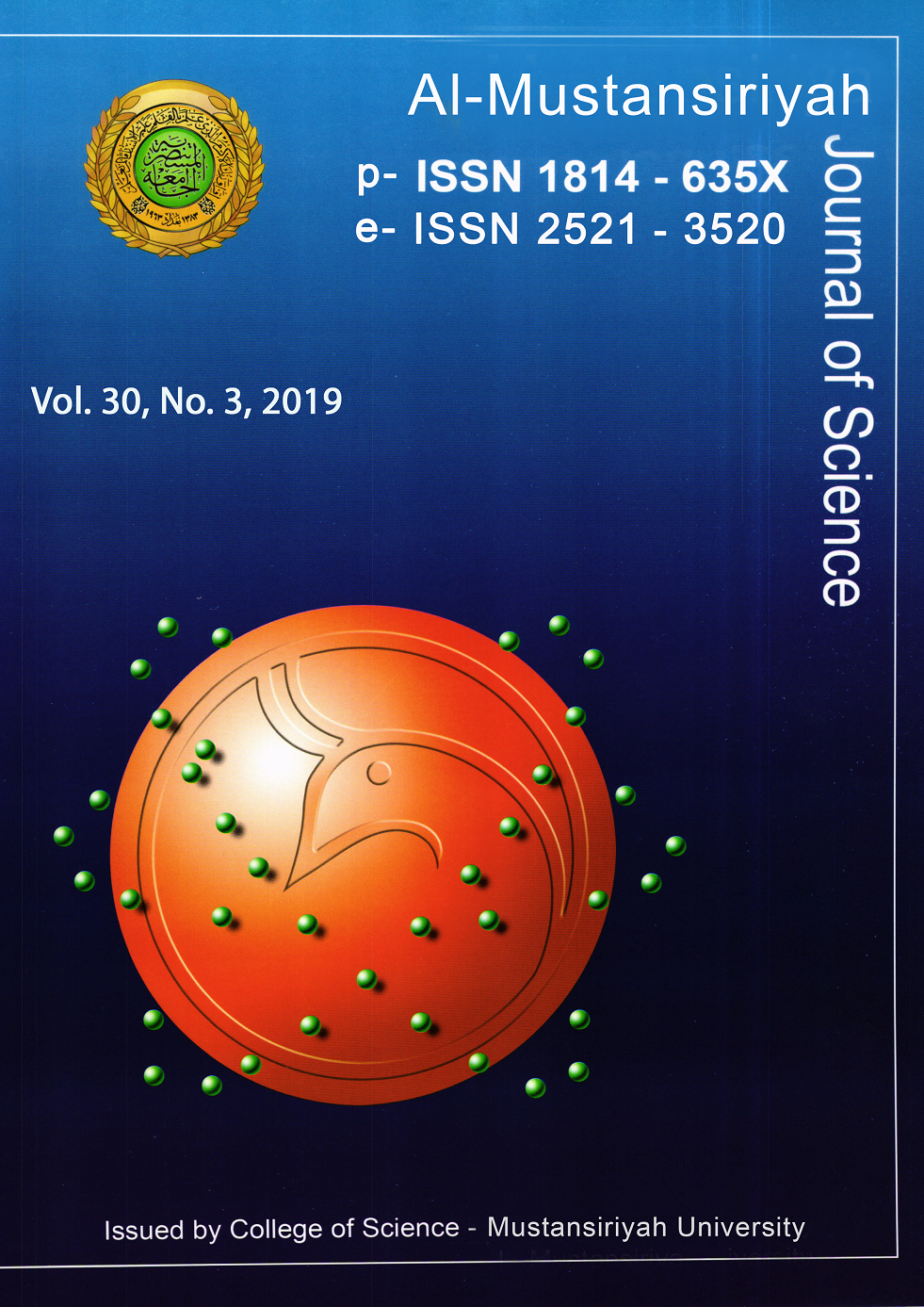Detection of Flagellin Gene of Enteric Isolates of Salmonella typhi Using PCR in Baghdad Governorate
DOI:
https://doi.org/10.23851/mjs.v30i3.329Abstract
The study was conducted to study the virulence gene (Flagellin gene) of Salmonella typhi. Stool samples were collected from adults patients, their age ranging from (15 – 60 ) years of the both sexes who suffering from diarrhea and visited AL- Yrmouk Teaching Hospital in Baghdad Governorate for the period between March to September 2017. The samples were transferred in cold boxes to the laboratory. In order to confirm the diagnosis, the polymerase chain reaction (PCR) was tested to diagnose the Flagellin gene responsible for the virulence of the bacteria. We conclude from the present study that flagellin gene in S. typhi is responsible for pathogenicity in this bacteria.Downloads
References
Crump JA, Mintz ED: Global trends in typhoid and paratyphoid Fever. Clinical infectious diseases: an official publication of the Infectious Diseases Society of America 2010,50(2):241-246.
">Crossref], [PubMed]
Sankar S, Kuppanan S, Nandagopal B, Sridharan G: Diversity of Salmonella entericaserovarTyphi strains collected from india using variable number tandem repeat (VNTR)-PCR analysis. Molecular diagnosis & therapy 2013, 17(4):257-264.
">Crossref], [PubMed]
Ley B, Mtove G, Thriemer K, Amos B, von Seidlein L, Hendriksen I, Mwambuli A, Shoo A, Malahiyo R, Ame SM et al: Evaluation of the Widal tube agglutination test for the diagnosis of typhoid fever among children admitted to a rural hdospital in Tanzania and a comparison with previous studies. BMC infectious diseases 2010, 10:180.
">Crossref], [PubMed]
(WHO) WHO: Background document: The diagnosis, treatment and prevention of typhoid fever. In. Geneva: World Health Organization.; 2003.
Burrows LL: Weapons of mass retraction. Molecular microbiology 2005, 57(4):878-888.
">Crossref], [PubMed]
Ibarra JA , Steele-Mortimer O , 2009 . Salmonella -the ultimate insider. Salmonella virulence factors that modulate intracellular survival . Cell Microbiol 11: 1579 - 1586.
">Crossref], [PubMed]
Nataniel T., Yadi Y., M. Sabir, Masyhudi A., Moch. H. 2015.Distribution Flagellin Gene Variants of Salmonella Typhi in Patients with Typhoid Fever in West Kutai, East Kalimantan,Indonesia.American Journal of Biomedical and Life Sciences 3(5): 98-103.
">Crossref]
Jawetz E., Melnick J.I. and Adelberg E.A. (2007) Medical Microbiology, 24th ed., Appleton and Lange, USA.
MaccFadin,J.K. (2000). Biochemical test for identification of medical bacteria. (3rd ed.). Lippincott Williams and Winkins . AwolterKlumer Company . Philadelphia Baltimor, New York.
Parry, C. M., Wijedoru, L., Arjyal, A. and Baker, S. (2011). The Utility of Diagnostic Tests for Enteric Fever in Endemic Locations. Expert Review ofAnti Infection Therapy, 11: 711 725.
">Crossref], [PubMed]
Taylor M, Coovadia HM, Kvalsvig JD, Jinnabhai CC, Reddy P. Helminth control as an entry point for health -promoting schools in KwaZulu Natal. S Afr Med J 1999; 89:273 - 79.
Levine MM. Typhoid fever. In: Evans AS, Brachman PS, (eds). Bacterial Infections of Humans. Epidemiology and Control. Third edn. New York, Plenum Medical Book Company, 1998,pp.839-58.
">Crossref]
Thong KL, Cheong YM, Puthucheary S, Koh CK, Pang T. Epidemiologic analysis of sporadic Salmonella typhiisolates and those from outbreaks by pulsed -field gel electrophoresis. J ClinMicrobiol 1994; 32:1135-41.
Sogard M, Norgaard M and Schonheyder HC (2007). First notification of positive blood cultures and the high accuracy of the gram stain report. Journal of Clinical Microbiology 45(4):1113-1117.
">Crossref], [PubMed]
Buxton A and Fraser G (1977). Animal Microbiology. Blackwell Scientific Publications, Oxford. Vol.1:85- 110.
Han J, David JD, Aaron ML, Pravin K, Rajesh N, Rossina S and Steven LF (2011). Comparison of Salmonella entericaserovar Heidelberg isolates from human patients with those from animal and food sources. Journal of Clinical Microbiology 49:1130-1133.
">Crossref], [PubMed]
Gallati C, Stephan R, Hächler H, Malorny B, Schroeter A, Nüesch-Inderbinen M, 2013. Characterization of Salmonella enterica Subsp. entericaSerovar 4,[5],12:i:- Clones Isolated from Human and Other Sources in Switzerland Between 2007 and 2011. Foodborne Pathog Dis. 2013 Jun; 10(6):549-554.
">Crossref], [PubMed]
Burrows L.L., 2005 : Weapons of mass retraction. Molecular microbiology, 57(4):878-888.
">Crossref], [PubMed]
Josenhans C, Niehus E, Amersbach S, Horster A, Betz C, Drescher B, Hughes KT, Suerbaum S. 2002: Functional characterization of the antagonistic flagellar late regulators FliA and FlgM of Helicobacter pylori and their effects on the H. pylori transcriptome. Molecular microbiology, 43(2):307-322.
Downloads
Key Dates
Published
Issue
Section
License
(Starting May 5, 2024) Authors retain copyright and grant the journal right of first publication with the work simultaneously licensed under a Creative Commons Attribution (CC-BY) 4.0 License that allows others to share the work with an acknowledgement of the work’s authorship and initial publication in this journal.






















